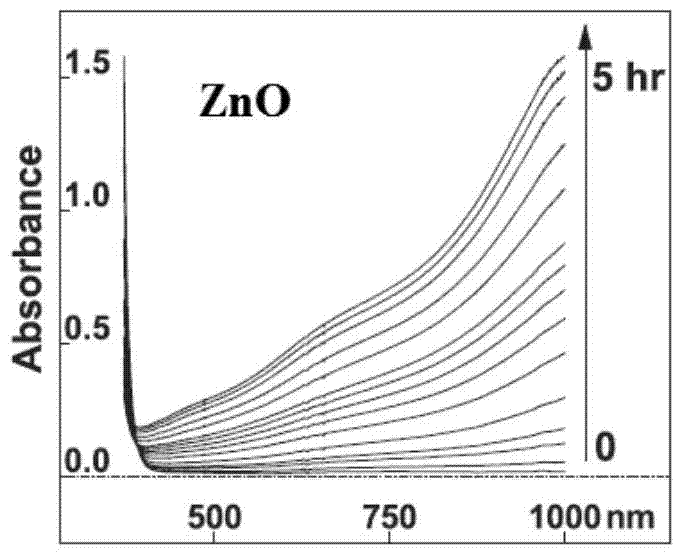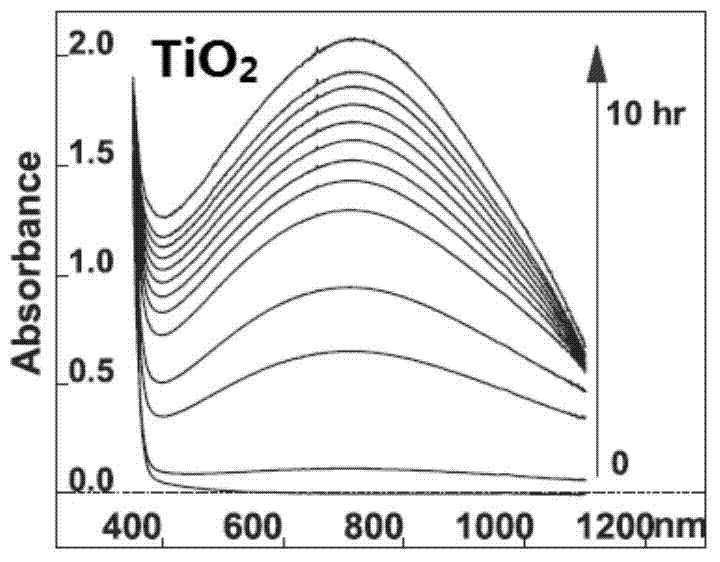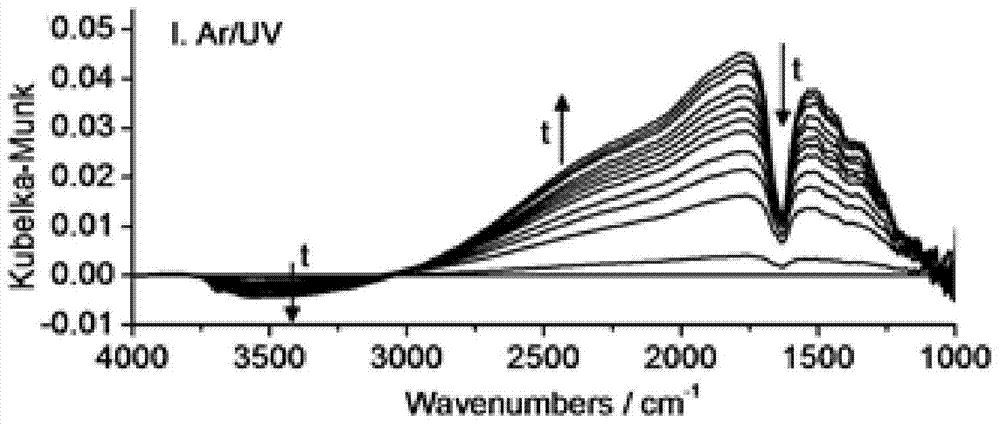Preparation method of high-reducibility nano material and application of high-reducibility nano material in underground water pollution treatment
A technology of groundwater pollution and nanomaterials, applied in the treatment of groundwater pollution, in the field of preparation of strongly reducing nanomaterials, can solve problems such as inability to obtain light
- Summary
- Abstract
- Description
- Claims
- Application Information
AI Technical Summary
Problems solved by technology
Method used
Image
Examples
Embodiment 1
[0028] Under the condition of argon, add 5% ZnO nanomaterials to 5% acetic acid aqueous solution, stir evenly, and react for 2 hours under the irradiation of ultraviolet light, so that the ZnO nanomaterials are in an electron-rich state, and made into strongly reducing nanomaterials . The prepared strong reducing nanometer material is directly added to simulated wastewater containing 0.01 mmol / L of decabromodiphenyl ether, and after stirring and reacting under anaerobic conditions, the removal rate of decabromodiphenyl ether is greater than 85%.
[0029] figure 1 The change of in-situ reflection ultraviolet-visible spectrum when the photochemical reduction reaction of the ZnO strongly reducing nano-material prepared above is irradiated by ultraviolet light, in the presence of methanol, and in argon atmosphere is given. Among them, the absorption in the range of 500-1000nm gradually increases, and from the visual point of view of the material itself, the color of the material ...
Embodiment 2
[0031] Under vacuum conditions, add 0.5% TiO to 2% potassium iodide aqueous solution 2 Nanomaterials, stirred evenly, and reacted for 5 hours under the irradiation of ultraviolet light, so that TiO 2 Nanomaterials present an electron-rich state and are made into strongly reducing nanomaterials. Add the prepared strong reducing nanomaterials to the groundwater pumped directly from a well (70 meters deep) in a polluted area, which contains about 0.005 mmol / L of 2,4-dichlorophenol, and stir the reaction under anaerobic conditions Finally, the removal rate of 2,4-dichlorophenol was greater than 90%.
[0032] figure 2 Given the TiO prepared above 2 The change of the ultraviolet-visible spectrum of the in-situ reflection of the strongly reducing nano-material when the photochemical reduction reaction occurs under the irradiation of ultraviolet light, the presence of methanol, and the atmosphere of argon. Among them, the absorption in the range of 500-1000nm gradually increases, a...
Embodiment 3
[0034] Under nitrogen, 15% Pd-TiO was added to 20% isopropanol aqueous solution 2 Nanomaterials, stirred evenly, reacted for 8 hours under the irradiation of ultraviolet light, making Pd-TiO 2 Nanomaterials present an electron-rich state and are made into strongly reducing nanomaterials. The prepared strong reducing nanomaterials were added as the medium of the permeable reaction wall to the permeable reaction wall simulation device (height 50cm, inner diameter 5cm) made of plexiglass, and 0.05mM The mole / liter decachlorobiphenyl aqueous solution passes through the reaction wall equipped with reducing nano-materials to control the water penetration rate to 0.7-0.8m / d, and the removal rate of decachlorobiphenyl in the effluent is greater than 90%.
[0035] image 3 Given the above-prepared Pd-TiO 2 In-situ reflection infrared spectrum changes of strongly reducing nanomaterials when they react under ultraviolet light, in the presence of isopropanol, and in an argon atmosphere...
PUM
 Login to View More
Login to View More Abstract
Description
Claims
Application Information
 Login to View More
Login to View More - R&D
- Intellectual Property
- Life Sciences
- Materials
- Tech Scout
- Unparalleled Data Quality
- Higher Quality Content
- 60% Fewer Hallucinations
Browse by: Latest US Patents, China's latest patents, Technical Efficacy Thesaurus, Application Domain, Technology Topic, Popular Technical Reports.
© 2025 PatSnap. All rights reserved.Legal|Privacy policy|Modern Slavery Act Transparency Statement|Sitemap|About US| Contact US: help@patsnap.com



